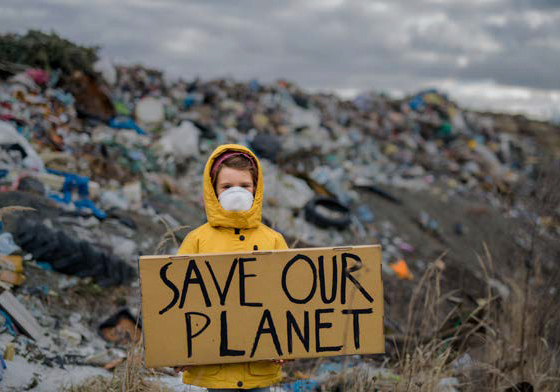The cost of going green
THE PLACE OF ESG, POLICY AND CONSUMER DEMAND IN CLEANING UP RETAIL’S REAL ESTATE
ESG AT THE HEART OF GOOD BUSINESS
There has been a step change in the property sector of late. Almost no day goes by without some mention of ESG and it is rapidly becoming the nerve centre that directs all decision making. ESG criteria are environmental, social, and corporate governance factors that investors or stakeholders use to screen potential investments.
Environmental criteria looks at the impact of resource consumption of a business on the environment, such as its carbon footprint or wastewater discharge, among other impacting activities. Social criteria address the relationships a company has with the communities where it does business, or how internal policies relate to labour, diversity, and inclusion. Governance criteria refer to a company’s internal practices and policies that lead to effective and ethical decision making, legal compliance, and meeting the needs of external stakeholders.
While ESG continues to colour conversations, there are good reasons to listen. Many companies are deciding to embed ESG at the heart of their strategy. For one, investors and costumers are becoming increasingly concerned with sustainability. Not being seen to act can have severe consequences for the value of stock. Yet, beyond the perception of responsibility, there’s also a compelling business case too. That is, there’s good evidence that more efficiently run companies are
more profitable, resilient, have lower overheads and attract more talent and custom. Lenders are also making moves. In the future, companies that don’t prioritise ESG may find it more difficult to access funding, which could inhibit growth. Companies must be one step ahead to remain competitive.

While tenants are demanding ESG-compliant space from landlords in the office sector, this has been less of a driver in the retail property sector, where fewer
new developments have been occurring in recent years and retail tenants have had a myriad of other problems to navigate. A survey from PERE in 2019 found that almost half of investors had experienced little or no progress in ESG with retail investments, compared to just 20% in office investments. However, although not all retail tenants are directing the ESG agenda to the properties they occupy, institutional retail landlords are making it a significant priority.
Furthermore, while most of the largest retail brands do have ESG and sustainability agendas, smaller or privately-owned businesses may not yet see it as a priority if their customers aren’t demanding it to be. Often, scale and access to resources prove major obstacles to change. And this reluctance proves an even bigger blockade to transforming retail as a whole. After all, small business isn’t small business when more than 60% of UK retail floorspace is owned by these types of companies. Here, the customer sentiment will be the driving force, whether in advocating for retail companies that demonstrate their commitment to ESG, or by withdrawing their business from those that don’t.
ENVIRONMENTAL LEGISLATION
Despite Brexit, the United Kingdom and the European Union need to align their ESG and carbon targets. The British government is expected to continue introducing legislation that, broadly, places it on equal footing with the EU’s sustainable finance regime. However, should their frameworks diverse, businesses that operate in both regions will likely opt to comply with the more onerous regime. The EU has passed two significant ESG-related regulations: the Sustainability-Related Disclosure Regulation (SFDR) at the end of 2019 and the Taxonomy Regulation in 2020. However, these are more guidance than legislation and are open to wide and largely unenforceable interpretation1.
As the UK steps up its net-zero policies, changes in legislation and those increased requirements being placed upon businesses will affect many asset classes including major UK retail portfolios. These include:
- MEES and minimum EPC ratings of ‘B’ by 2030
- Energy and carbon reporting
- Energy Savings Scheme
- Mandatory in-use performance of buildings assessments
- Petrol and diesel ban by 2030
- Heat network regulations
- Duty of care and hazardous waste regulations
The British government intends to start a “green industrial revolution” to stimulate recovery from the Covid-19 pandemic. However, so far the Government’s 10 Point Plan2 fails to adequately consider commercial property, with almost all of the focus on greener buildings being on residential property.
However, other considerations are pertinent in retaining relevance and resilience to shoppers, such as the way that goods are transported to customers; customers’ travel to buy goods; or in minimising waste once the products have left, or indeed not left, their shelves. The Environment Act 2021 includes various policies that will affect retail property (e.g. biodiversity legislation, waste, water and regulations on electric vehicle charging), but many of these are weighted to new properties while failing to address the 1.4bn sqft of existing retail stock that needs to be improved and supported in doing so.
Without more guidance, this leaves owners and occupiers of retail property with an insurmountable focus to meeting the MEES regulations and improving the emission standards of their buildings; the EPC ‘Cliff Edge’3 is of particular relevance in the lead up to 2030. This may result in on a focus away from other equally important initiatives.

CONSCIOUS CONSUMERS
So, will consumer demand make the difference? There are signs that shoppers are responding to the climate emergency and preferences and needs are changing. Customers are paying more attention to environmental impacts, demanding more transparency, and making lifestyle changes. The ‘plastic’ revolution is having a tangible and profound effect on the ways consumers view the world and their impact within it; 80% describe themselves as being ‘environmentally friendly’. But what does this mean really and does it translate into actual behaviour?
A frustrating paradox remains at the heart of green business: few consumers who report positive
attitudes toward eco-friendly products and services follow through with their wallets. Coming out of the global pandemic left consumers with optimism for the future and more responsible attitudes to their environmental impact and importance of supporting their communities.
However, geopolitical tensions and a cost of living crisis have been damaging to how people have been able to live by these attitudes; two thirds of consumers expect inflation to curb their finances in 2022/23. So what can shoppers do about it, even if they want to? While 75% say they won’t pay a premium for green products, this doesn’t mean that they won’t punish retailers that fail to adapt quickly to a greener, cleaner way of doing business. The last few years are littered with the debris of once retail stalwarts unable to move with the times. Trust is low and only a third of consumers expect retailers to follow through with their environmental claims.
There are a multitude of surveys out there that attempt to understand the rapid evolution in consumer demand for sustainable retail products. It boils down to four important considerations:
- Consumers want to be green
- They expect to get this for free
- The cost-of-living crisis will impact on shoppers’ ability to stand by their green principals
- They don’t trust retailers to follow through with their claims and will punish those that fail to deliver on them
Retailers (and their landlords) are evolving their offer to respond to these trends, but there are widespread fears of ‘greenwashing’ i.e. using token gestures to mask lack of action elsewhere, or that action falls short of need. The retail industry shapes the choices available to customers and is sophisticated in its communication with and influence on customers. Retailers can therefore play a central role in helping consumers make the transition to low carbon lifestyles4.
With the lack of transparency and knowledge about what goes on behind the scenes in the retail supply chain it is understandable that consumers will respond to what they can actually see and why shops themselves are therefore so important in showrooming a retailer’s green credentials.
WHO PAYS?
Nothing is free. So, who should pay for reducing the carbon impact of the built environment and the consumption of retail goods, or to improve their sustainability factors? In other words, who’s responsible for greening our shops?
Landlords? The largest funds are generally swayed by their own ESG agendas and theoretically have access to capital. But, the costs may be prohibitive, or benefit tenants through lower energy bills. Most owners of retail estate don’t, in fact, have deep pockets.
Tenants? Ultimately, retailers still require their stores to access customers and would do well to avoid alienating them through a lack of action. However, due to reduced margins and the lion share of their emissions being within their supply chain, the shop environment might not top the list when it comes to going net-zero.
Shoppers? Increasingly green, but can’t or won’t pay for it. Consumers will look at product branding, social initiatives, or environmental adaptations that are most visible when deciding whether to make a purchase. Making improvements to the emissions of an old building might not get noticed, so, from a consumer lens, why would a retailer or landlord invest in the invisible?
Government? The master policy maker, with the potential to wave both carrot and stick. However, governments often lack in-depth insight to appreciate an industry’s nuances, or they may be swayed by policies that have more political impact. In essence, policy drivers aren’t strong enough and will need to go further. The vast proportion of needed changes lack viability, or a common thread between multiple owners or commercial neighbours within town centres.
Whichever way we look at it, if we do nothing we all pay the price. The cost of inaction will be a greater financial and environmental burden in the future. Shoppers and communities prefer greener, cleaner spaces and are more loyal when social value and environmental improvements are made. Therefore if we want to make more sustainable and investable retail places and town centres it makes economic sense to drive improvements through the ESG and consumer lens, while collaborating with tenants and policy makers on a joined-up stakeholder vision. Together, we all reap the reward.
WHO PAYS?





